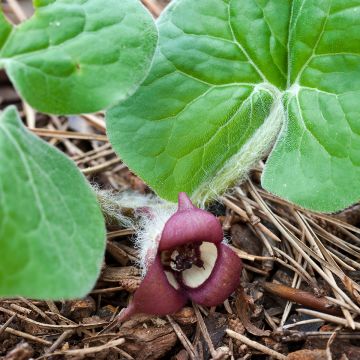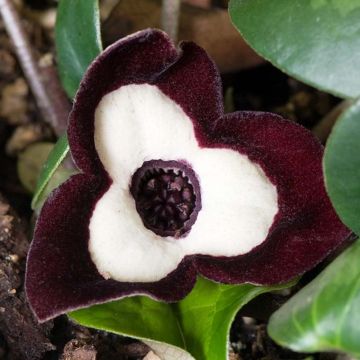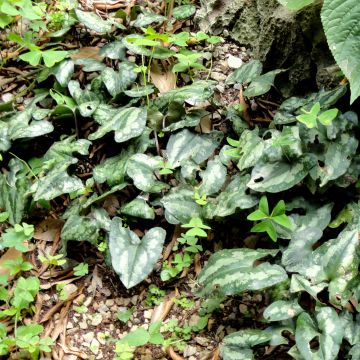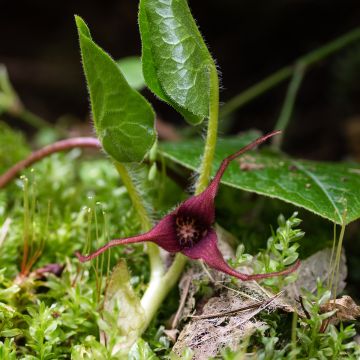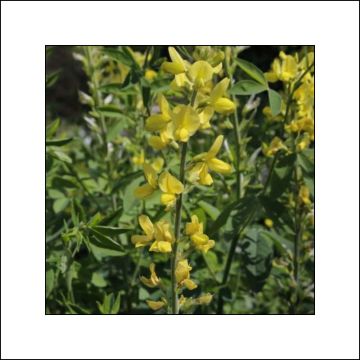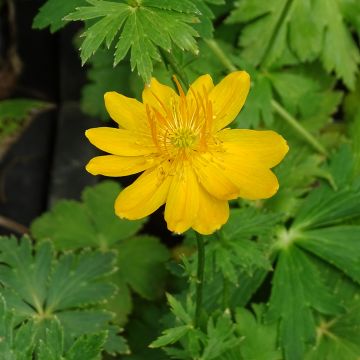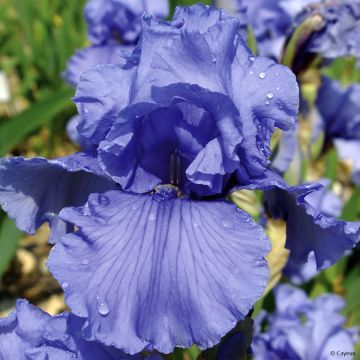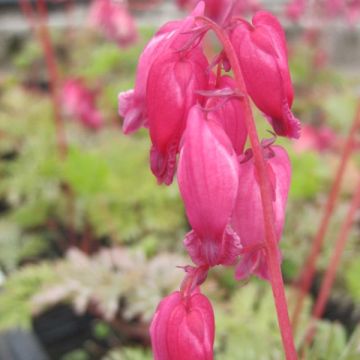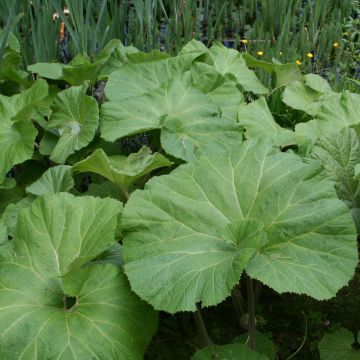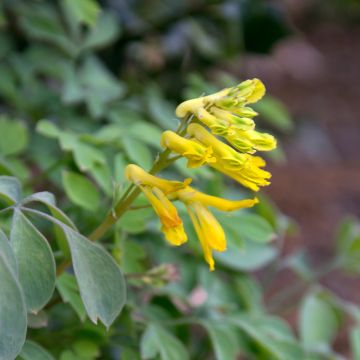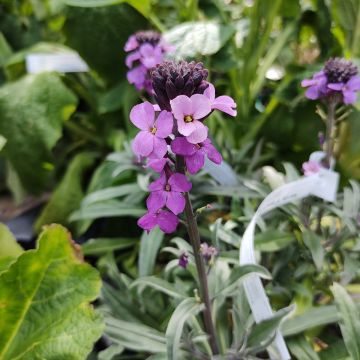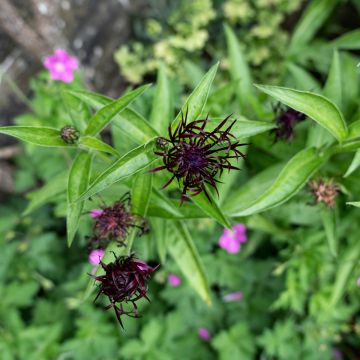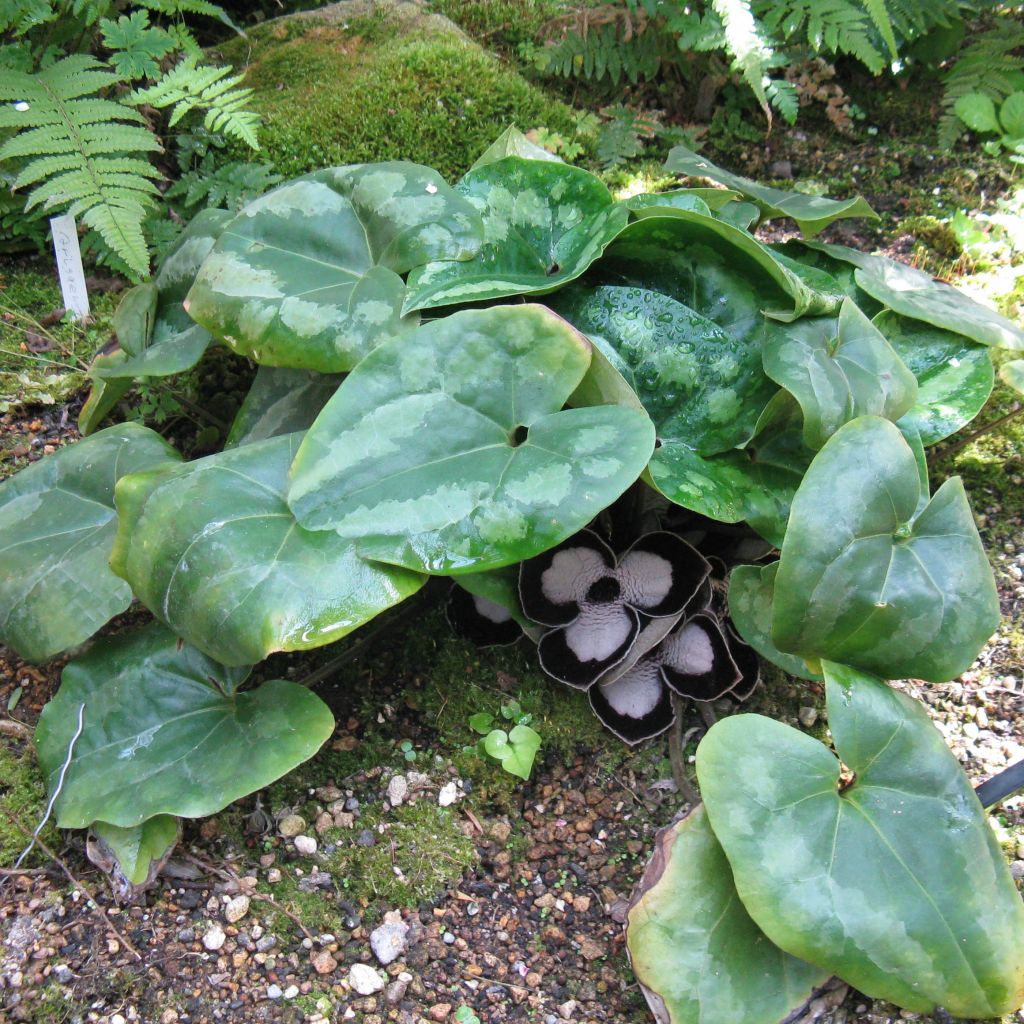

Asarum maximum Giant
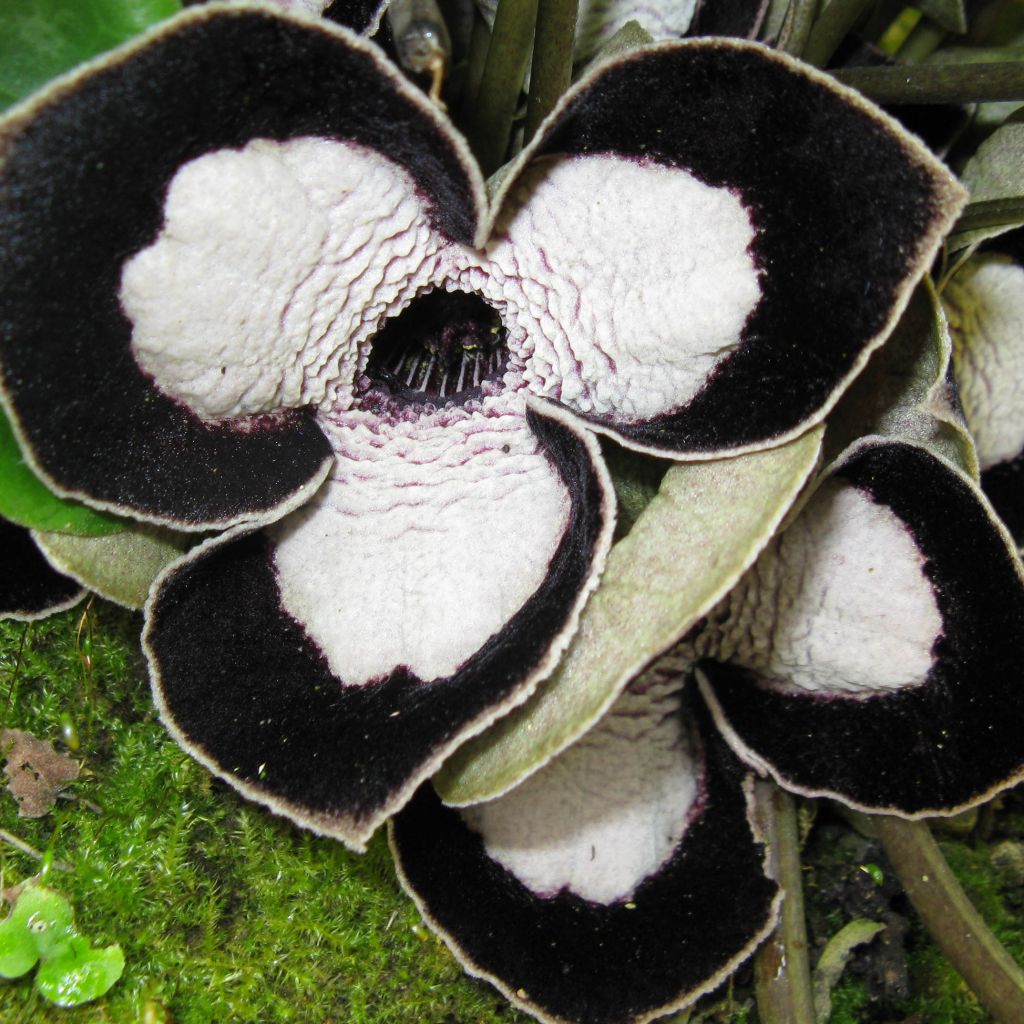

Asarum maximum Giant
Asarum maximum Giant
Asarum maximum Giant
Giant Wild Ginger
After 2 years of patience and only one flower last spring, I am delighted to discover that I will have 7 this year... including one already open and splendid!
MarieJeanne H, 26/03/2022
Why not try an alternative variety in stock?
View all →This plant carries a 12 months recovery warranty
More information
We guarantee the quality of our plants for a full growing cycle, and will replace at our expense any plant that fails to recover under normal climatic and planting conditions.
From €5.90 for pickup delivery and €6.90 for home delivery
Express home delivery from €8.90.
Does this plant fit my garden?
Set up your Plantfit profile →
Description
Asarum maximum 'Giant', also known as Giant Wild Ginger, is a rare Chinese species with splendid glossy foliage, blending two shades of green and marbled with silver, whose icy surface reflects a surprising metallic sheen. This shade-loving perennial hides a nest of round, bi-coloured flowers beneath its ample foliage in spring, with a dark purple almost-black colour and large white spots, emitting a curious mushroom scent. Its heart-shaped leaves are evergreen and form sumptuous ground cover in light woodland and cool soil.
Sometimes called Wild Ginger due to the spicy and lemony fragrance that can be detected by crushing its leaves or roots, Asarum maximum 'Giant' is a species endemic to China, belonging to the Aristolochiaceae family, with no connection to ginger. While its cousins, Dutchman's pipes, climb the branches of trees in tropical or Mediterranean regions, 'Giant' wild ginger spreads out in the shade of the undergrowth, forming a 15 cm (6 in) high carpet and spreading thanks to its rhizomatous roots. Its evergreen leaves resemble those of cyclamens. They are 15 cm (6 in) long, heart-shaped, and grow in tufts near the ground. Completely marbled and spotted with bright green, darker green, and silver, their epidermis beautifully reflects light. Between March and May, relatively large bell-shaped flowers appear near the ground, fascinating but somewhat hidden under the leaves. They have three highly contrasting petals, almost black-purple, highlighted by a large white basal spot.
Reaching just over 15 cm (6 in) in height, 'Giant' wild ginger makes an excellent ground cover in the undergrowth. It appreciates shady exposures and cool humus-rich soils in summer, as well as well-drained soil, and pairs beautifully with other shade-loving perennials, such as Sanguinaria, Achimenes, Syneilesis, and Rohdea, or ferns. It is a hardy plant, and its foliage remains evergreen even in very low temperatures, especially under a thick blanket of snow. It can easily be grown in a pot to be admired up close and to closely monitor attacks from gastropods.
Report an error about the product description
Asarum maximum Giant in pictures
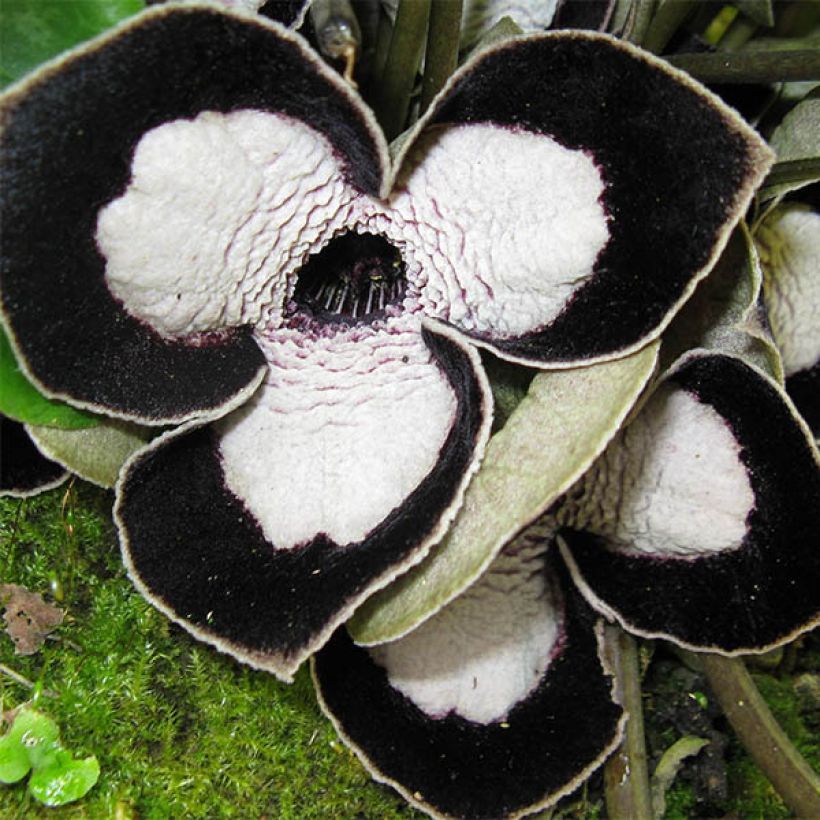

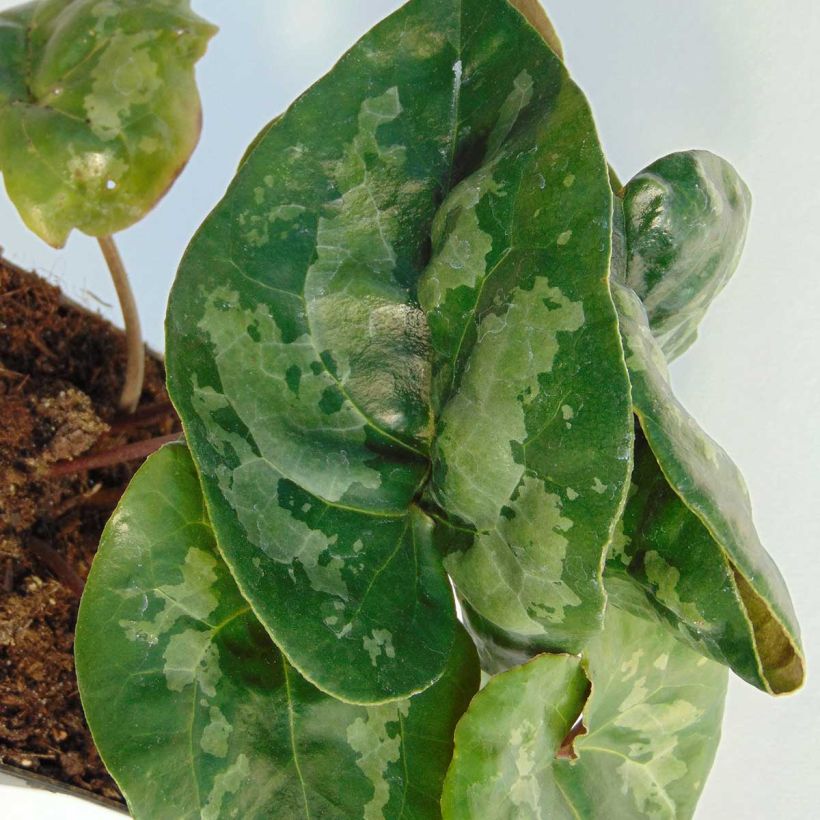

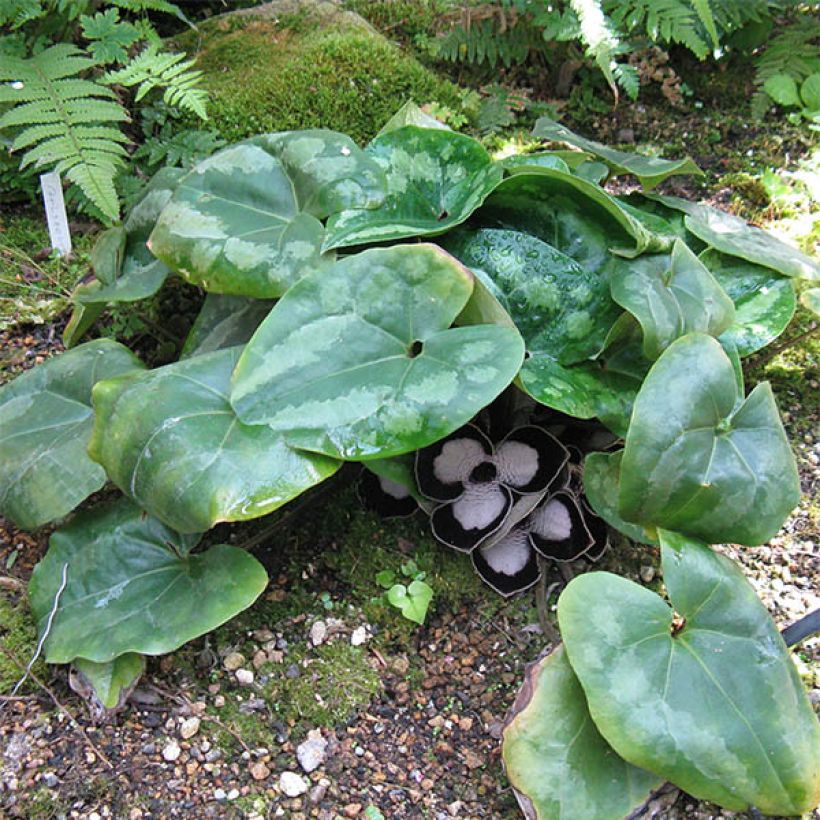

Flowering
Foliage
Plant habit
Botanical data
Asarum
maximum
Giant
Aristolochiaceae
Giant Wild Ginger
China
Other Asarum
Planting and care
Plant Asarum maximum any time in autumn or spring, in shade or partial shade, in light, humus-rich soil that is always moist in summer. These very easy plants do not have any particular requirements and are resistant to cold. Just make sure to water them regularly during the first year of growth, especially during dry periods, to promote their establishment.
Able to withstand root competition, it can be planted at the base of spring shrubs.
Protect the stump with dead leaves in cold regions where snow does not provide natural protection.
Planting period
Intended location
Care
-
, onOrder confirmed
Reply from on Promesse de fleurs
Spring flowering perennials
Haven't found what you were looking for?
Hardiness is the lowest winter temperature a plant can endure without suffering serious damage or even dying. However, hardiness is affected by location (a sheltered area, such as a patio), protection (winter cover) and soil type (hardiness is improved by well-drained soil).

Photo Sharing Terms & Conditions
In order to encourage gardeners to interact and share their experiences, Promesse de fleurs offers various media enabling content to be uploaded onto its Site - in particular via the ‘Photo sharing’ module.
The User agrees to refrain from:
- Posting any content that is illegal, prejudicial, insulting, racist, inciteful to hatred, revisionist, contrary to public decency, that infringes on privacy or on the privacy rights of third parties, in particular the publicity rights of persons and goods, intellectual property rights, or the right to privacy.
- Submitting content on behalf of a third party;
- Impersonate the identity of a third party and/or publish any personal information about a third party;
In general, the User undertakes to refrain from any unethical behaviour.
All Content (in particular text, comments, files, images, photos, videos, creative works, etc.), which may be subject to property or intellectual property rights, image or other private rights, shall remain the property of the User, subject to the limited rights granted by the terms of the licence granted by Promesse de fleurs as stated below. Users are at liberty to publish or not to publish such Content on the Site, notably via the ‘Photo Sharing’ facility, and accept that this Content shall be made public and freely accessible, notably on the Internet.
Users further acknowledge, undertake to have ,and guarantee that they hold all necessary rights and permissions to publish such material on the Site, in particular with regard to the legislation in force pertaining to any privacy, property, intellectual property, image, or contractual rights, or rights of any other nature. By publishing such Content on the Site, Users acknowledge accepting full liability as publishers of the Content within the meaning of the law, and grant Promesse de fleurs, free of charge, an inclusive, worldwide licence for the said Content for the entire duration of its publication, including all reproduction, representation, up/downloading, displaying, performing, transmission, and storage rights.
Users also grant permission for their name to be linked to the Content and accept that this link may not always be made available.
By engaging in posting material, Users consent to their Content becoming automatically accessible on the Internet, in particular on other sites and/or blogs and/or web pages of the Promesse de fleurs site, including in particular social pages and the Promesse de fleurs catalogue.
Users may secure the removal of entrusted content free of charge by issuing a simple request via our contact form.
The flowering period indicated on our website applies to countries and regions located in USDA zone 8 (France, the United Kingdom, Ireland, the Netherlands, etc.)
It will vary according to where you live:
- In zones 9 to 10 (Italy, Spain, Greece, etc.), flowering will occur about 2 to 4 weeks earlier.
- In zones 6 to 7 (Germany, Poland, Slovenia, and lower mountainous regions), flowering will be delayed by 2 to 3 weeks.
- In zone 5 (Central Europe, Scandinavia), blooming will be delayed by 3 to 5 weeks.
In temperate climates, pruning of spring-flowering shrubs (forsythia, spireas, etc.) should be done just after flowering.
Pruning of summer-flowering shrubs (Indian Lilac, Perovskia, etc.) can be done in winter or spring.
In cold regions as well as with frost-sensitive plants, avoid pruning too early when severe frosts may still occur.
The planting period indicated on our website applies to countries and regions located in USDA zone 8 (France, United Kingdom, Ireland, Netherlands).
It will vary according to where you live:
- In Mediterranean zones (Marseille, Madrid, Milan, etc.), autumn and winter are the best planting periods.
- In continental zones (Strasbourg, Munich, Vienna, etc.), delay planting by 2 to 3 weeks in spring and bring it forward by 2 to 4 weeks in autumn.
- In mountainous regions (the Alps, Pyrenees, Carpathians, etc.), it is best to plant in late spring (May-June) or late summer (August-September).
The harvesting period indicated on our website applies to countries and regions in USDA zone 8 (France, England, Ireland, the Netherlands).
In colder areas (Scandinavia, Poland, Austria...) fruit and vegetable harvests are likely to be delayed by 3-4 weeks.
In warmer areas (Italy, Spain, Greece, etc.), harvesting will probably take place earlier, depending on weather conditions.
The sowing periods indicated on our website apply to countries and regions within USDA Zone 8 (France, UK, Ireland, Netherlands).
In colder areas (Scandinavia, Poland, Austria...), delay any outdoor sowing by 3-4 weeks, or sow under glass.
In warmer climes (Italy, Spain, Greece, etc.), bring outdoor sowing forward by a few weeks.


































